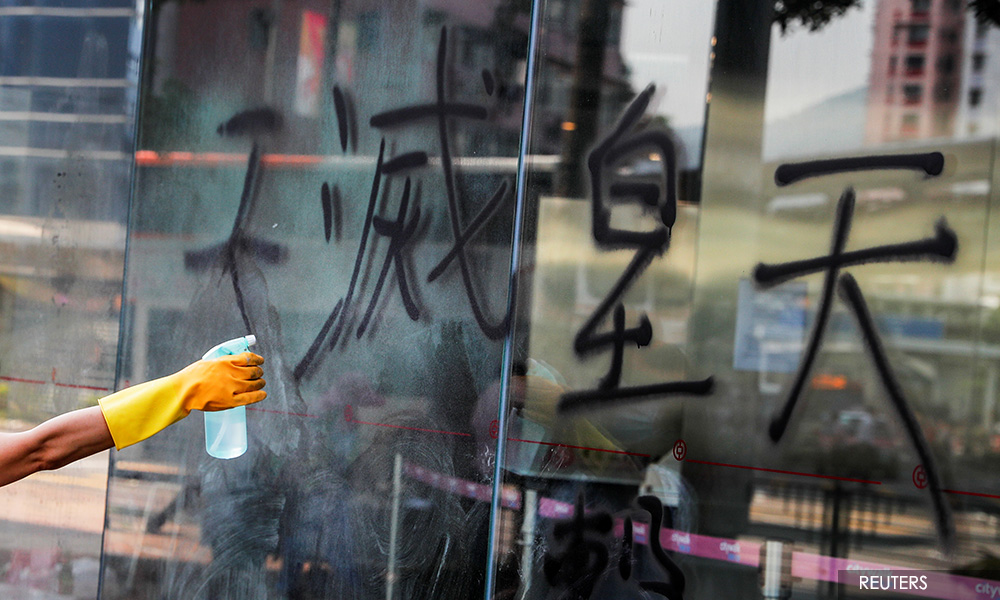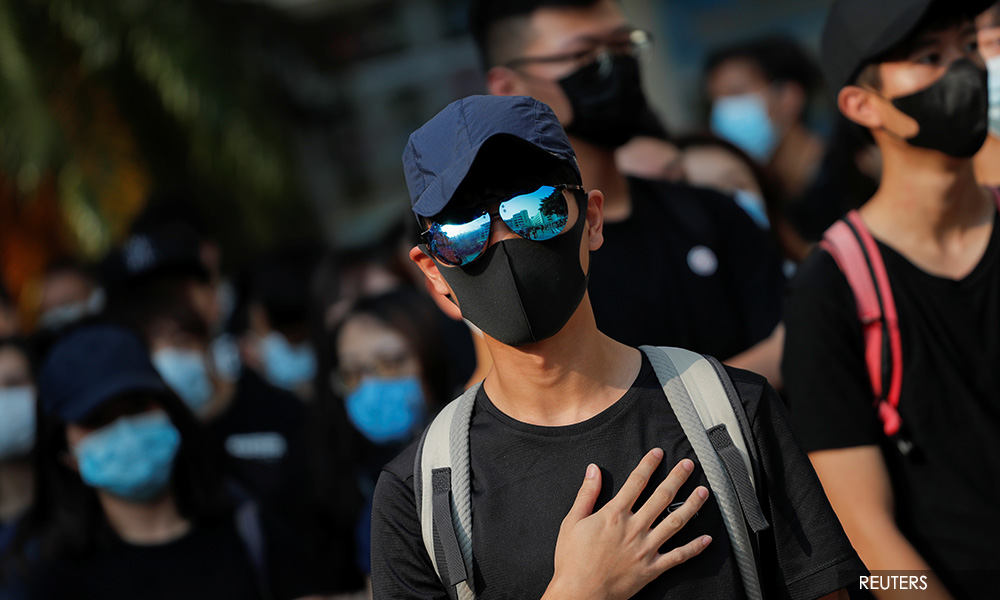'Lady Liberty' statue hoisted above Hong Kong to rally protests
Hong Kong protesters scaled the city’s Lion Rock peak and hoisted a large statue they called “Lady Liberty” early on Sunday to rally anti-government activists ahead of more planned demonstrations in the Asian financial hub.
The three-metre statue, wearing a gas mask, helmet and protective goggles, was carried up the 500-metre peak in the dead of night by several dozen protesters, some wearing head lamps, during an overnight thunderstorm.
It held a black banner that read "Revolution of our time, Liberate Hong Kong" and could be seen from the city below.
The statue represented an injured woman protester believed by activists to have been shot in the eye by a police projectile. One of the protesters told Reuters he hoped it would inspire Hong Kong people to keep fighting.
"We are telling people that you mustn't give up. All problems can be resolved with Hong Kong people's persistence and hard work to reach our aims," he said.
Hong Kong has been battered by four months of often massive and violent protests against what is seen as Beijing's tightening grip on the Chinese-ruled city, and more protests are planned for Sunday.

Petrol bombs were thrown inside a Hong Kong metro rail station on Saturday, but no one was injured, the government said.
The MTR, which usually carries some 5 million people daily, will shut early on Sunday and the Airport Express will not stop between central Hong Kong and the airport.
Metro stations have been torched and ticketing machines damaged because protesters believe MTR management, at the instruction of the government, has closed stations to hinder protesters' movements. It was forced to shut down completely last week.
The protests started in opposition to a now-abandoned extradition bill, but have widened into a pro-democracy movement and an outlet for anger at social inequality in the city, which boasts some of the world's most expensive real estate.
The unrest has plunged the city into its worst crisis since Britain handed it back to China in 1997 and poses the biggest popular challenge to Chinese President Xi Jinping since he came to power in 2012.
Protesters believe China has been eroding Hong Kong's freedoms, guaranteed under a "one country, two systems" formula introduced with the 1997 handover.
The now-withdrawn extradition bill, under which residents would have been sent to Communist-controlled mainland courts, was seen as the latest move to tighten control.
China denies the accusation and says foreign countries, including Britain and the United States, are fomenting unrest.

After almost a week of relative calm, following some of the worst violence since the unrest started, hundreds of protesters wearing face masks staged a peaceful march in Kowloon on Sunday, with only a small group trashing shops and mainland China banks.
The government said petrol bombs were thrown into the entrance of the Kowloon Tong station, and a Kowloon government office was set on fire.
Riot police deployed to the streets, but protesters had dispersed without any major confrontation by late Saturday night.
The Hong Kong government introduced colonial-era emergency laws last week to ban the wearing of face masks at public rallies, a move that sparked some of the worst violence since the unrest started in June.
Police have arrested more than 2,300 people since June. Since September, nearly 40 percent were under the age of 18, and 10 percent under 15.
Protesters accuse police of using excessive force, claims which they deny. Two protesters have been shot and wounded during skirmishes with police.
Hong Kong is facing its first recession in a decade due to the protests, with tourism and retail hardest hit.
- Reuters
RM12.50 / month
- Unlimited access to award-winning journalism
- Comment and share your opinions on all our articles
- Gift interesting stories to your friends
- Tax deductable

